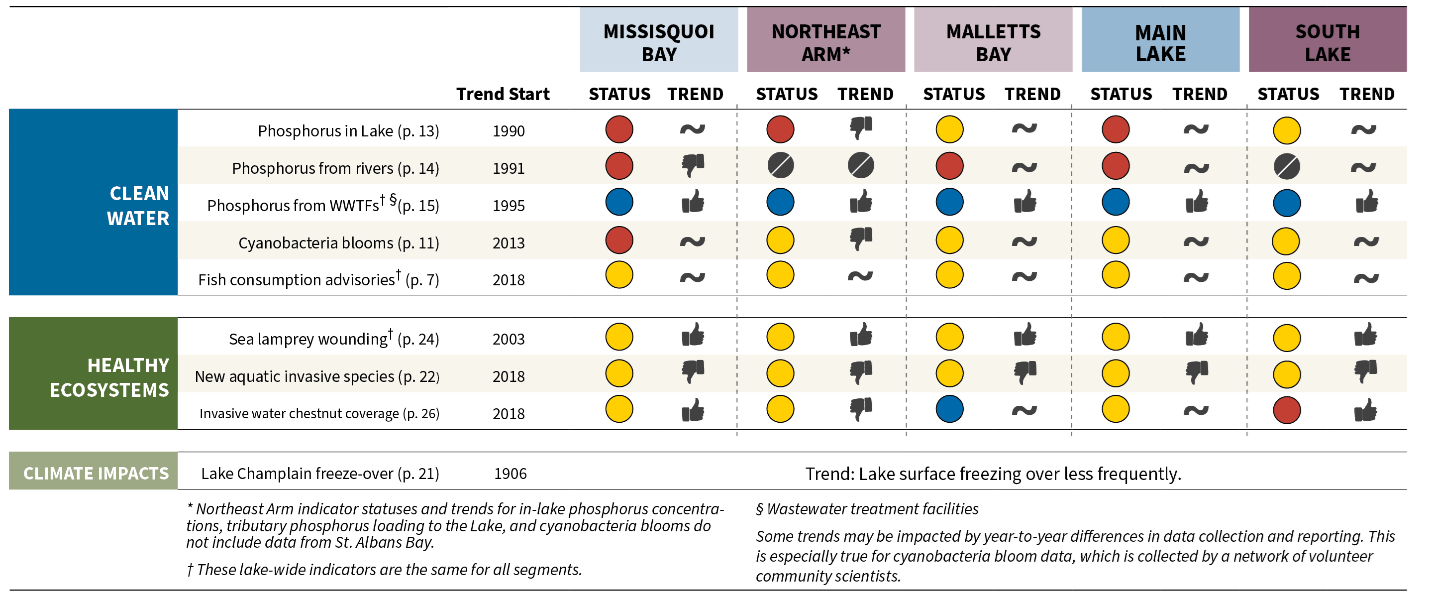Every three years, the Lake Champlain Basin Program (LCBP), a NEIWPCC program partner, releases an updated “State of the Lake and Ecosystems Indicators Report.” The report assesses recent conditions of Lake Champlain through a series of ecosystem indicators and is used by resource managers and the public.

“The “2021 State of the Lake and Ecosystem Indicators Report” provides a unique view of the conditions of Lake Champlain and its watershed, the successes our staff and partners have achieved, and the ongoing challenges we collectively face,” said Susan Sullivan, NEIWPCC executive director. “NEIWPCC is proud to support development and access to the science that underpins the report and the ongoing work to communicate and engage with the communities in the Lake Champlain Basin.”
The 36-page report describes Lake Champlain in terms of the four goals of the Basin Program’s strategic plan, Opportunities for Action, as follows:
- Clean water
- Healthy ecosystems
- Thriving communities
- Informed and involved public
The Ecosystem Indicators Scorecard, shown below, provides an at-a-glance status and trend of the Lake’s five major segments for indicators of clean water, healthy ecosystems, and – new this year – climate impacts. The new metric, “Lake Champlain freeze-over,” helps readers understand changes in how often the Lake freezes over and potential impacts of warming trends on its ecosystem.

In addition, the report shares maps and charts related to everything from beach closures resulting from cyanobacteria blooms, mercury loads in fish, invasive species, to public access locations and more. “What you can do” tips in each of the four report sections detail everyday actions to support a healthy Lake Champlain basin.
The report has its own website that reproduces all the sections of the report and includes supplemental content. The printed version is available from the LCBP, and online for download. French translation of the report will be available online in August.